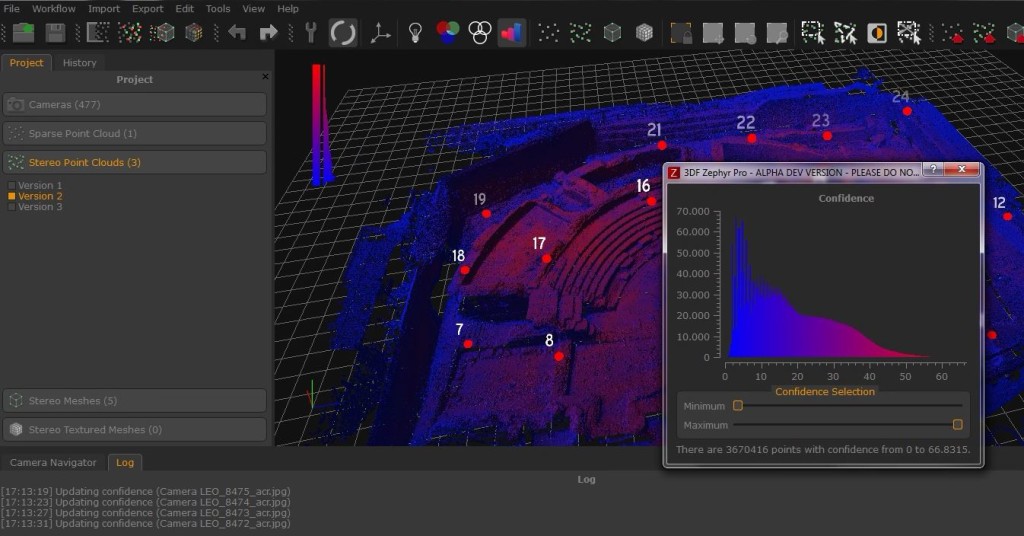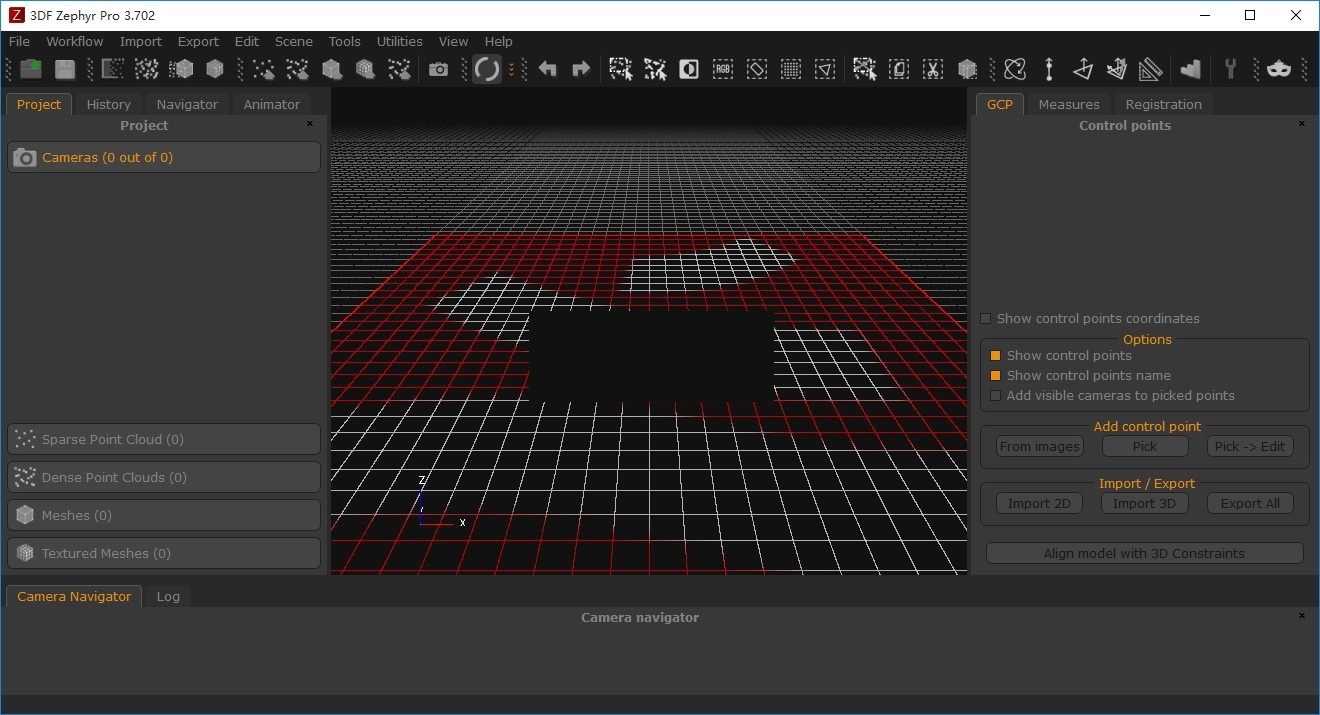

※ The model generated from video – The texture reflects on the blurred images. ※ The model generated from photos – it’s captured clearly. So, keep higher FPS to prevent blurred images and move the camera slowly when scanning. The latter, in particular, lowered the quality significantly. Therefore it compromises the quality of textures. It’s recorded while walking so it could easily have blurred images.

It compromises the quality of textures as a video has a lower resolution than a photograph.It’s a handy function but it has some drawbacks. One of the features of 3DF Zephyr is that you can apply Photogrammetry to the video file. Pros and Cons of the Video-Based Photogrammetry The basics of 3DF Zephyr is clearly explained in this article, so please refer to it at any time. I will explain the techniques for wide-area Photogrammetry from this point.
3DF ZEPHYR PRO 2.250 HOW TO
3DF Zephyrįrom this point onward, I summarize how to use 3DF Zephyr. If you don’t have Adobe Bridge, then I recommend using this function. Windows10’s Standard Tag FunctionĮven without using Bridge, you can tag files with Windows10’s standard function. But, for ‘division processing’, I recommend adding a keyword to each part to manage them easily. You don’t have to manage the photos closely when you process them at once. We use Adobe Bridge to manage a lot of photos.
3DF ZEPHYR PRO 2.250 PC
※ My home PC is being operated from my iPhone Adobe Bridge
3DF ZEPHYR PRO 2.250 INSTALL
You can easily install it by adding a Chrome’s extension and it allows you to access your PC from a smartphone.

On the other hand, Chrome Remote Desktop doesn’t require the port opening. So, if your environment doesn’t allow to open the port, you cannot use them. There are some remote access tools available, but most of them require the port opening. So I recommend using a PC remote access tool. In this case, if you are out when the process is finished, your PC cannot move on to the next process until you get home, which is a huge waste of time. In the case of Zeniarai Benten VR, the first process of calculating the positions of the photos (Align) took about 60 hours (with Core i7-7700HQ and GTX1070). Photogrammetry carries out most of the tasks autonomously. ※You can change the cache location here Recommended Tools Insufficient disk space could cause a problem for the Photogrammetry processing, so please make sure you have enough space when you are working on your photogrammetry project. So, I recommend setting the cache location in the SSD. When processing, the data is saved frequently. So, the processing will progress smoothly with SSD, which has a quicker read/write time. In wide-area Photogrammetry, the project file of 3DF Zephyr could be close to 20GB, depending on the size of the target area. Even if multiple instances of 3DF Zephyr appeared working without problems, they would crash when completing the processing. In particular, launching multiple 3DF Zephyr increases the risk of a crash. Be aware that significant memory shortage could make the PC crash. In the case of wide-area Photogrammetry, 32GB may not be enough, so 64GB would be a safe option. So, the more memory size your PC has, the more stable the processing will be. Photogrammetry processes an enormous number of photos. And, 3DF Zephyr will significantly slow down if the GPU doesn’t support CUDA. Please be aware that poor PC performance would compromise GPU performance even if you have a high-performance GPU (CPU causes a bottleneck). However, CPU performance equally plays an important part, so the higher the computational performance is, the more efficiently photos are processed. GPU performance is important for Photogrammetry to process photos. In this ‘PC system requirement’, I summarize the recommended specification and tools for ‘wide-area’ Photogrammetry.


 0 kommentar(er)
0 kommentar(er)
